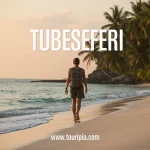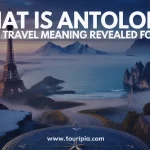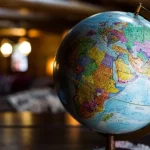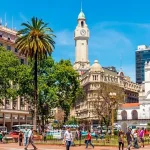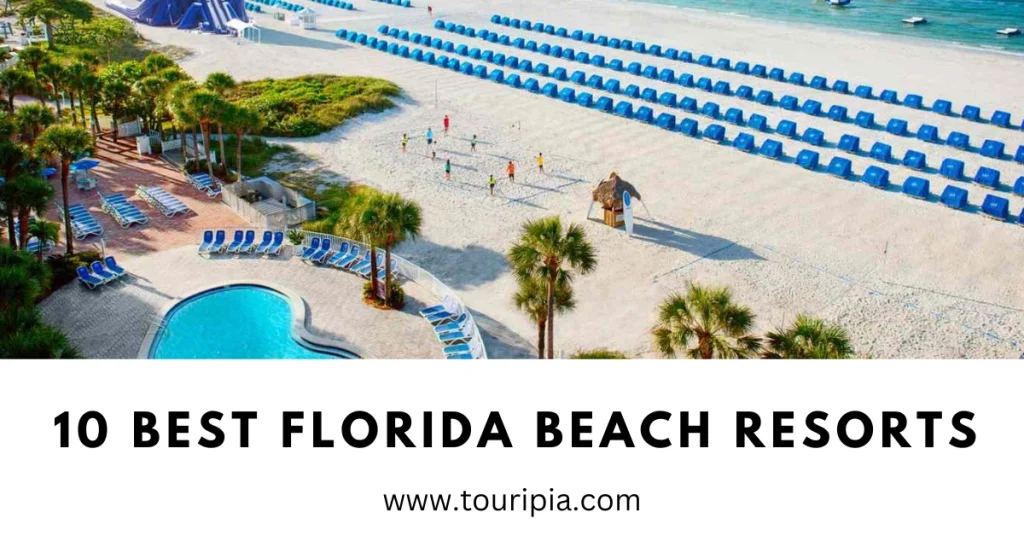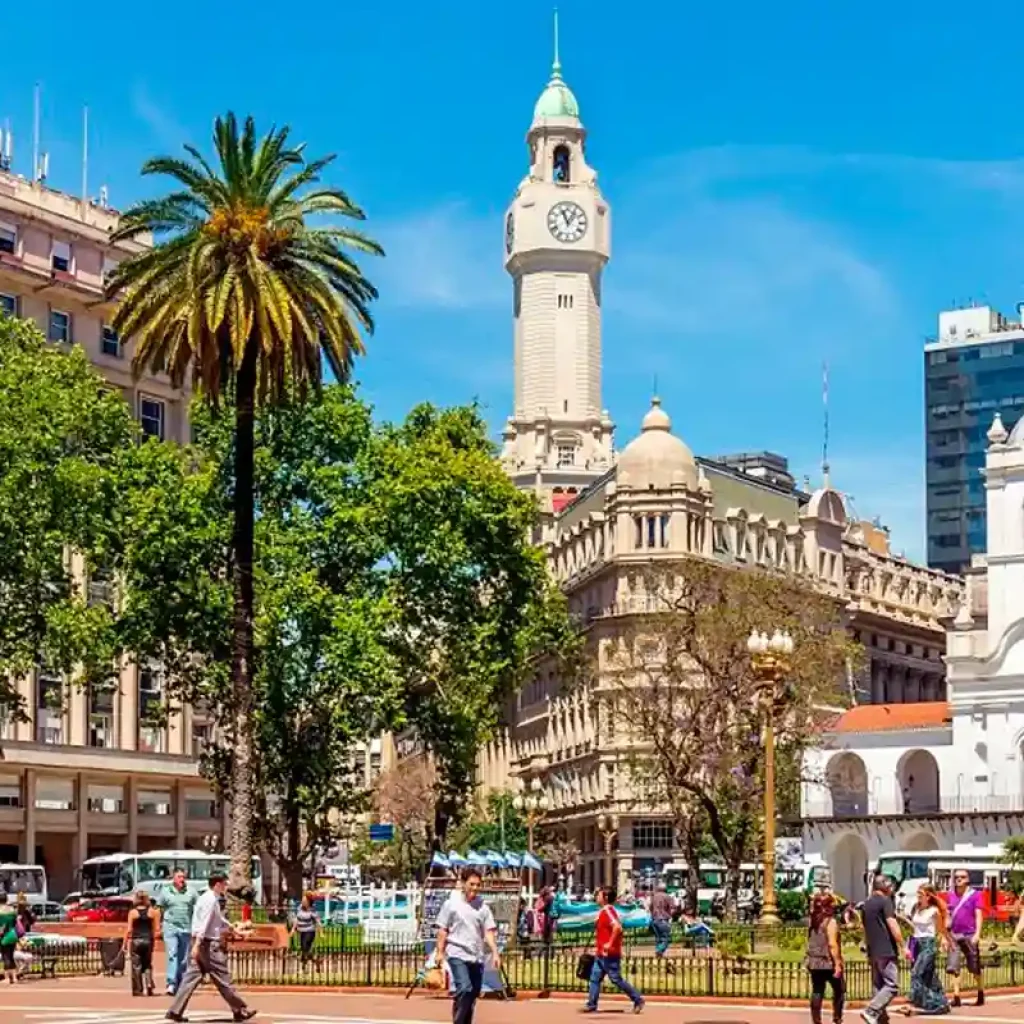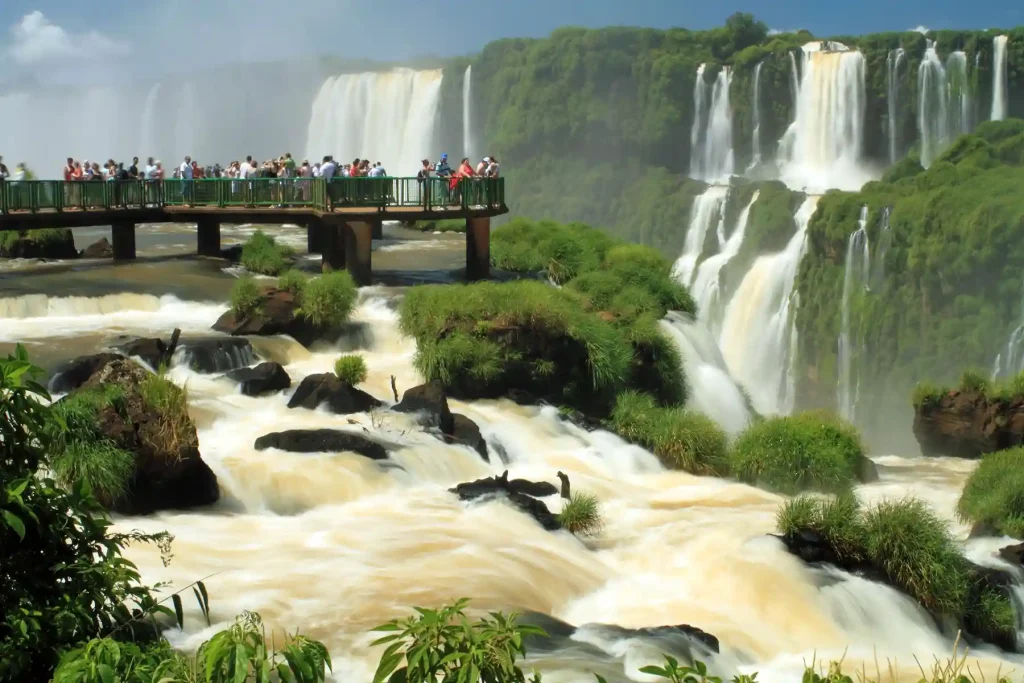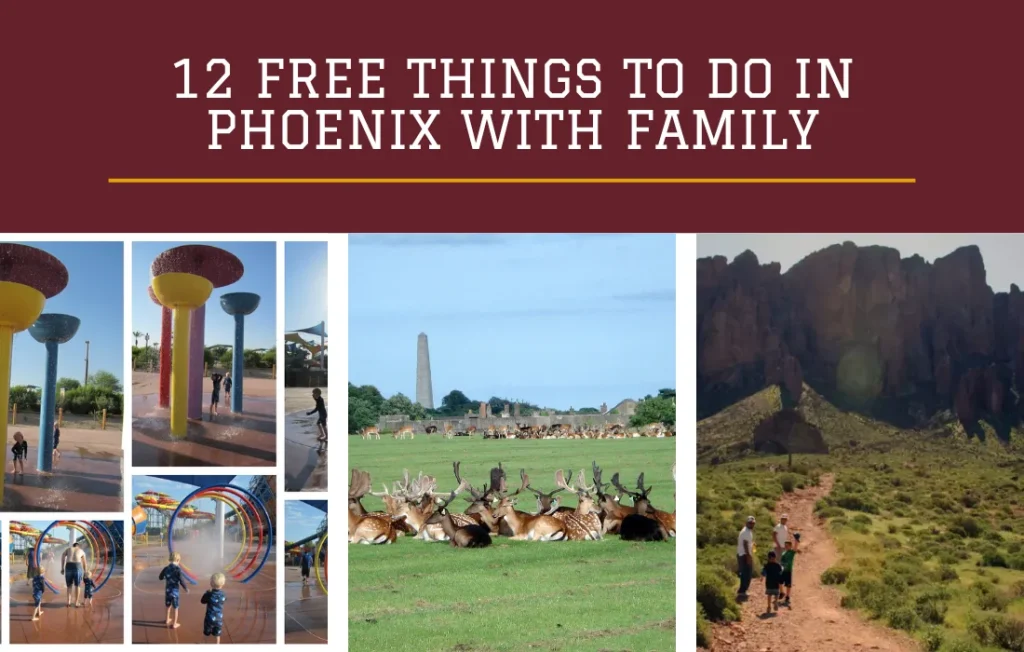10 Magical Places to Visit in El Salvador That Don’t Feel Real
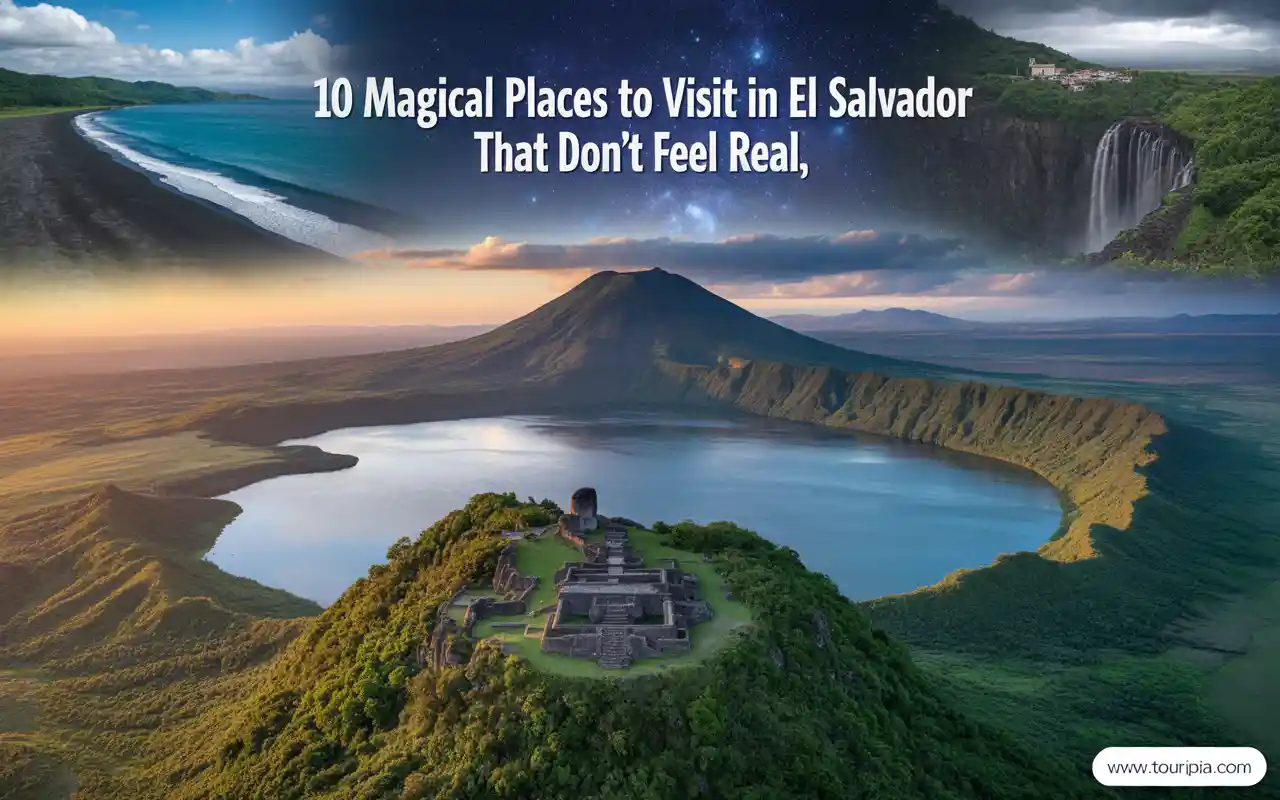
I’ve stood on the rim of a glowing volcano, watching steam curl off a crater lake so green it felt unreal. I’ve kayaked through warm blue waters in the middle of a massive volcanic caldera… and wandered through the eerily preserved remains of a buried Mayan village, where it felt like the people had just stepped out for lunch.
And the wild part? All of that happened in one tiny country — There’s many Magical Places to Visit in El Salvador.
If you’re looking for places to visit in El Salvador that feel like something out of a dream (but still grounded enough to book a flight to), you’re in the right headspace. This isn’t just a checklist of tourist spots. It’s a journey into the surreal corners of Central America where reality blurs a little — where volcanoes hum, waterfalls vanish into the jungle, and forgotten towns whisper their stories.
Over the years, I’ve crisscrossed El Salvador with local guides, shared roadside pupusas with strangers who became friends, and gotten lost more than once down dirt roads that weren’t on any map. So… what you’re about to read comes from lived experience, not just travel brochures.
10 Magical Places to Visit in El Salvador That Don’t Feel Real
Let’s start uncovering these magical places. Trust me — they don’t feel real, but they absolutely are.
1. Santa Ana Volcano (Ilamatepec)
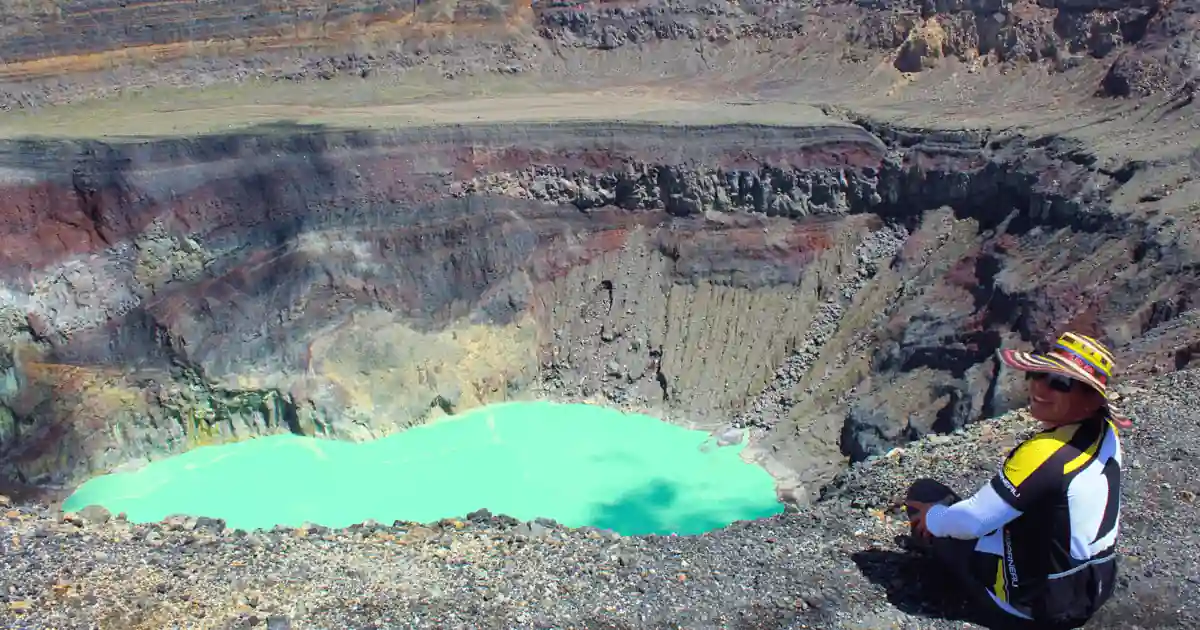
There’s something strange about standing on the edge of a living volcano while staring into what looks like a glowing neon eye. The crater lake of Santa Ana (or Ilamatepec, as locals still call it) shifts between electric green and soft turquoise depending on the light… and it smells faintly of sulfur and stories.
From the summit, on a clear day, you can see not just El Salvador, but Guatemala and Honduras too — like you’re standing at the rooftop of Central America.
What to do there: The hike is a steady 3-hour roundtrip trek, not too difficult if you start early. Sunrise is magical. Like, otherworldly. You’ll want layers though — the wind bites hard at the top.
How to get there: Base yourself in Santa Ana town. From there, grab a local shuttle or arrange a group tour to Cerro Verde National Park. Park rangers usually lead groups up the trail (mandatory, for safety and conservation).
Cultural insight: Some locals believe the volcano holds a protective spirit, especially during eruptions. There’s a quiet reverence on the trail that’s hard to explain… like people know they’re walking through something sacred.
Pro tip: Grab breakfast at one of the roadside comedores near Cerro Verde — the coffee tastes stronger up here, maybe because you earned it.
2. Lake Coatepeque
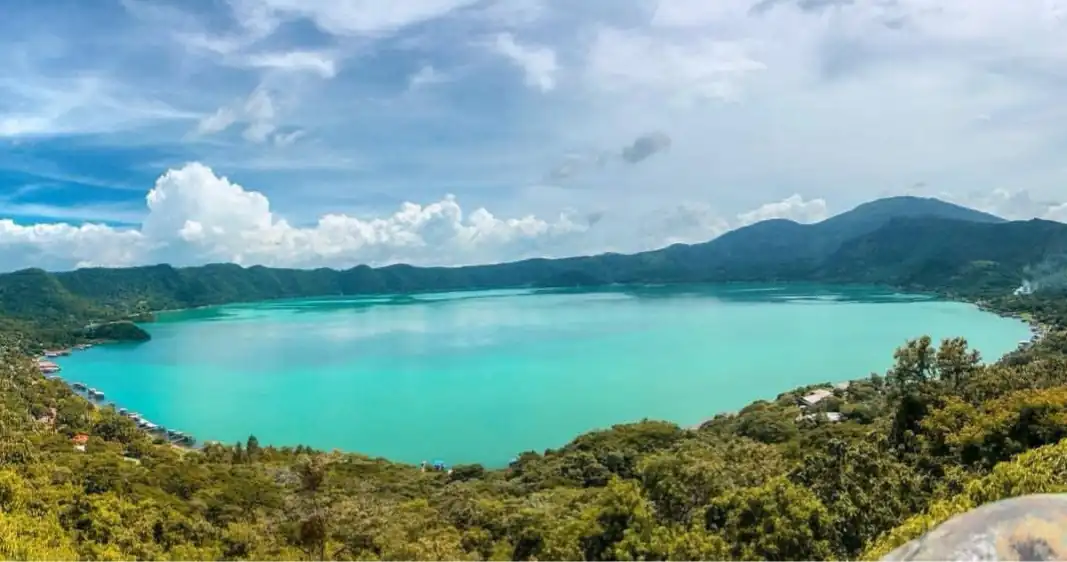
This isn’t just a lake. It’s a collapsed volcano that nature turned into something absurdly beautiful. Lake Coatepeque shimmers blue in the sun, but on some days, it changes… shifts into an almost surreal turquoise. Locals call it “el cambio de color.” No one agrees on why it happens. But everyone agrees it’s breathtaking.
Floating restaurants line the shores — some of them only reachable by boat. The thermal springs, tucked along the lake’s edges, are a secret best discovered by kayak. One moment, you’re gliding through cool water… and the next, you paddle into a warm, steamy pocket that feels like nature’s own jacuzzi.
What to do there: Rent a kayak or take a slow boat ride. You can swim, but many visitors just float and stare at the sky. It’s that kind of place.
How to get there: A quick drive from Santa Ana (about 45 minutes). Local buses run to El Congo, and from there, you can hop into a tuk-tuk or shared pickup heading toward the lake.
Local insight: On weekends, the lake fills with music and life — Salvadorans love it here. But come on a Tuesday? You might have the whole thing to yourself.
Pro tip: Some of the lakefront houses are rentable on Airbnb. If you can swing it, stay overnight. Waking up to fog rolling over the water… it’s not something you forget.
3. Tamanique Waterfalls
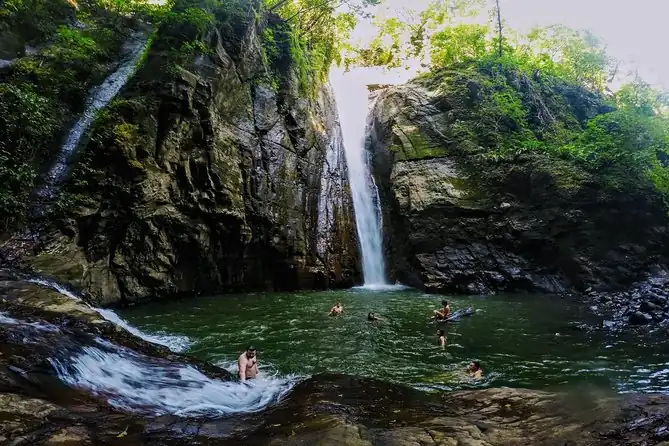
You hear them before you see them. A low rush, then the slap of water against stone… and suddenly, you’re looking down at a string of aquamarine pools tumbling through the jungle. Tamanique Waterfalls don’t feel like a tourist spot. They feel like they were discovered yesterday. And maybe they kinda were — at least by outsiders.
Just a short hike from the surfer-favorite town of El Tunco, these falls are raw, wild, and utterly surreal. You’ll scramble over rocks, slide down natural stone chutes, and (if you’re brave enough) jump off cliffs into clear blue water that shocks you awake.
What to do there: Swim, slide, jump… or just sit in the cool mist and let time slow down. Go with a local guide — they know the safest spots and can share stories you won’t find on Google.
How to get there: Base yourself in El Tunco. From there, guides and tours run daily, or you can hike it with someone who knows the way. It’s not exactly marked.
Cultural note: The local guides are often part of community conservation projects. Your visit helps fund their efforts to keep the area clean and protected.
Pro tip: Wear real shoes. Flip-flops won’t cut it on the rocky trail. And bring extra cash — some spots charge a tiny entrance fee that supports the local community.
4. Suchitoto
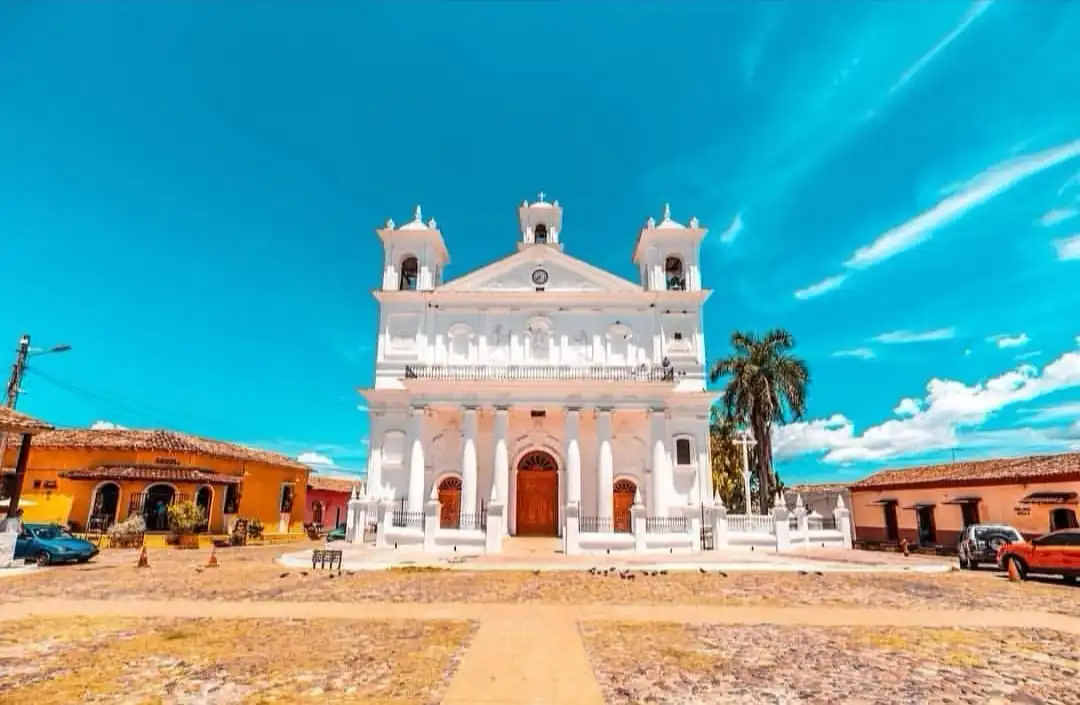
If you were to stumble into Suchitoto without knowing where you were… you might think you’d fallen through time. Cobblestone streets, pastel-colored houses with red-tiled roofs, sleepy plazas where grandmothers sell handmade crafts from under sun-faded umbrellas — it all just feels older. Softer. Slower.
But it’s not frozen. It’s alive, just… quietly.
Mornings here often start in mist, with the faint sound of church bells echoing off the hills. And by late afternoon, the town glows gold. From the colonial architecture to the artists’ galleries tucked into side alleys, Suchitoto is easily one of the most unique places to visit in El Salvador.
What to do there: Wander aimlessly. Seriously. You’ll find artisanal workshops, the Centro Arte Para la Paz (an old convent turned art and peace center), and maybe catch a cultural festival if your timing is lucky. Then take a boat ride on nearby Lake Suchitlán — birdwatchers will lose their minds out there.
How to get there: From San Salvador, it’s an easy 90-minute ride. Buses go regularly, but a shared shuttle or private driver makes things simpler if you’re short on time.
Historic touchpoint: This town played a big role in El Salvador’s civil war history. Ask a local, and they might share what it was like when peace slowly returned.
Pro tip: Skip the weekend rush if you can. Weekdays feel more authentic… and cheaper, honestly. Bonus: Mercado Central has surprisingly good snacks.
5. El Imposible National Park
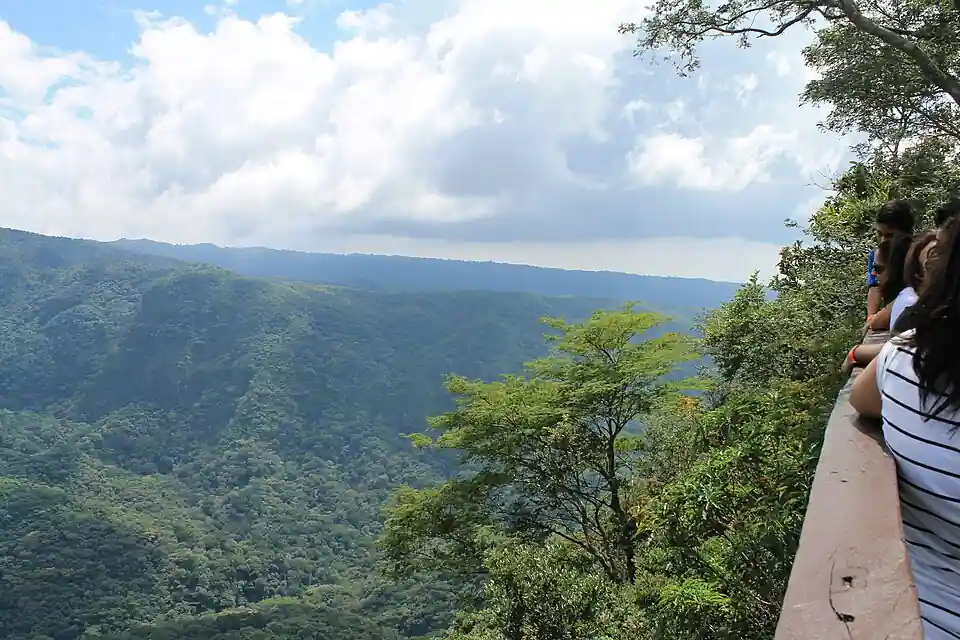
With a name like El Imposible, you’d expect something dramatic — and you’d be right. It’s the kind of place that makes you feel very small. Dense, almost impenetrable cloud forests draped over steep canyons. Towering trees.
Rare orchids hiding behind vines. And the silence? Thick. Except for birdcalls and, if you’re lucky, the sound of something larger moving in the shadows.
Rumor has it jaguars still wander these woods. Not that you’ll likely see one. But still… the idea lingers.
What to do there: Hike, hike, and hike some more. There are multiple trails, from easier loops to full-day treks. Some lead to waterfalls, others to lookout points that make you question reality. And deep inside, there are hidden Mayan archaeological sites that haven’t been fully uncovered.
How to get there: Base yourself in Tacuba. From there, hire a certified local guide — don’t go in without one. You’ll need a permit, and the trails aren’t exactly friendly to newcomers.
Eco note: El Imposible is part of a vital biosphere. It’s a biodiversity hotspot, and visiting responsibly really matters here. Stick to paths, don’t pick plants, and avoid loud music — yes, people bring speakers. Please don’t.
Pro tip: If you’re staying overnight nearby, check out Hostal El Imposible. It’s rustic, sure, but there’s something calming about falling asleep to jungle sounds.
6. Playa El Zonte
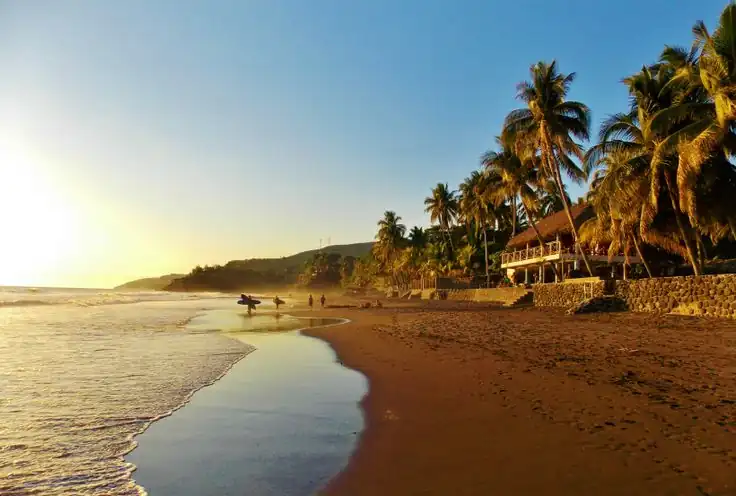
There’s a kind of soft chaos at El Zonte. On one side, barefoot surfers heading toward the black sand beach. On the other, digital nomads sipping cold brew in open-air cafes where chickens strut underfoot. And somewhere in between? The odd crypto enthusiast waxing poetic about decentralization next to a hammocked yoga teacher. Strange mix. But it works.
The beach itself is wild and textured — volcanic rock tide pools, dramatic cliffs, and waves that curl just right. At night, if you’re here in the right season, bioluminescent plankton light up the water like sparks from a match.
What to do there: Surfing is the obvious draw, but even if you don’t ride waves, you can explore tide pools, catch sunset yoga, or just hang out with travelers and locals alike. Some nights there’s live music, and it spills into the street in the best way.
How to get there: About 45 minutes from La Libertad. You can grab a bus (Route 192) or hitch a ride with someone staying in El Tunco — it’s nearby and often paired in travel routes.
Local character: El Zonte’s reputation has grown thanks to its embrace of Bitcoin. It’s one of the world’s first communities to experiment with crypto in everyday transactions. Weird, maybe… but undeniably fascinating.
Pro tip: Book at least one night at a boutique surf retreat like Mandala Eco Villas or check if Casa Victoria has a cliffside room. The views are something else. And yes, some spots are even pet-friendly.
7. Joya de Cerén (The “Pompeii of the Americas”)
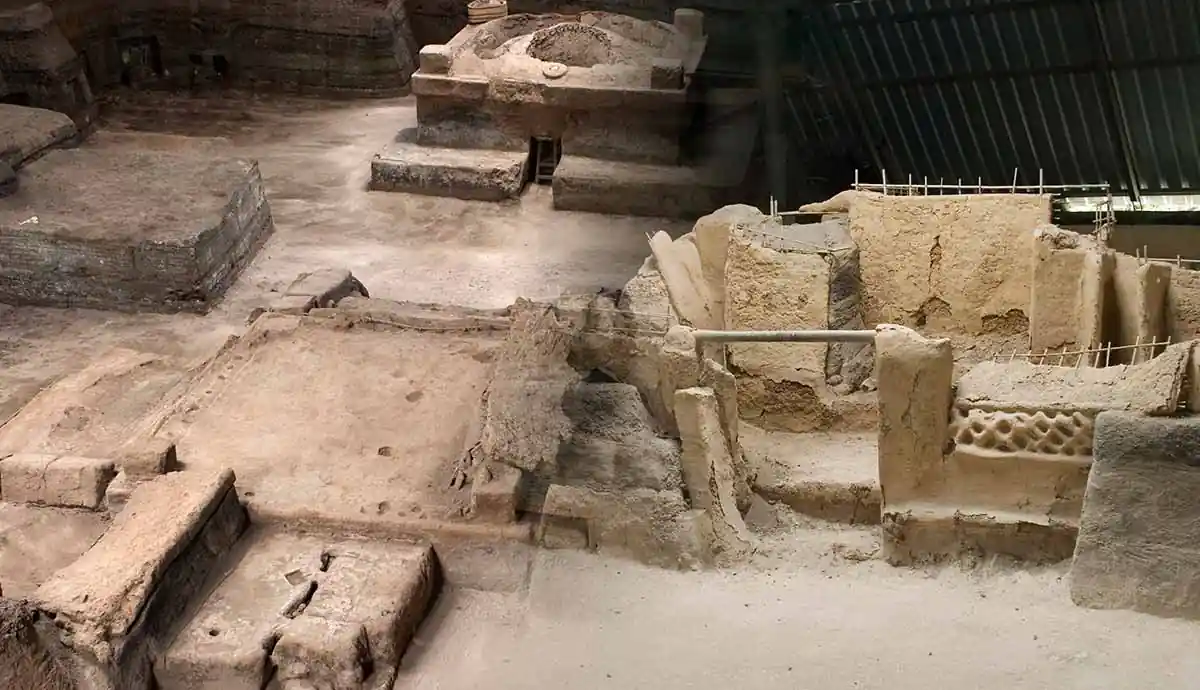
It’s eerily quiet here. Not in a spooky way — more like… respectful. Joya de Cerén doesn’t shout for your attention. It sort of hums beneath the surface. Literally. This ancient Mayan village was buried under volcanic ash around 600 A.D. and preserved almost perfectly — homes, pottery, even farming tools, all frozen mid-life.
And unlike many Mayan ruins that show grandeur or religious power, this place shows everyday living. Kitchens. Beds. Gardens. It feels oddly intimate, like you’re peeking into someone’s world thousands of years ago.
Why it feels unreal: You’re not walking among kings or temples here. You’re walking through someone’s home — unchanged for centuries. Honestly, it kind of catches you off guard.
What to do there: Take your time. There’s signage and some interpretive guides, but if you can, book a local tour for deeper context. They’ll explain how the volcanic eruption, while devastating, actually gave historians one of the clearest windows into ancient Central American life.
How to get there: Just 35 minutes outside San Salvador by car. It’s a smooth drive, and most day tours combine this with San Andrés or the Quelepa ruins if you’re into Mayan archaeological sites.
Cultural note: It’s a UNESCO World Heritage Site, and for good reason. This is one of the few places in the Americas that gives such a detailed, personal look at indigenous daily life before colonization.
Pro tip: Pair it with a visit to the Museo Comunitario Nahuat Pipil or the Museo de la Palabra y la Imagen if you’re staying in San Salvador. The extra context brings the whole timeline into focus.
8. Los Chorros de la Calera (in Juayúa)

This one’s hidden in plain sight. Juayúa is famous for its weekend food festival — and yeah, that alone is worth the visit (Sopa de Mondongo, anyone?). But walk a little further out, and you’ll stumble into something you weren’t expecting: Los Chorros de la Calera.
A curtain of waterfalls tucked into the hills, moss-covered and misty. The kind of place where time feels slower. The water’s cold — surprisingly so — and perfect after a hot day exploring the colorful town.
What to do there: Hike to the falls (it’s short but slippery), then take a dip in the plunge pools. They’re icy, but if you hang around long enough, your body gets used to it. Or not. Either way, it wakes you up.
How to get there: From Juayúa’s town center, it’s about a 20-minute walk. Ask a local or follow the path behind the main church. Some folks offer to guide you for a small tip — totally worth it if you’re unsure where to go.
Cultural connection: Juayúa lies along the famous Ruta de las Flores, known for mountain views, colonial charm, and blooming hillsides. It’s also home to local legends, like the tale of Piedra Sellada — a sacred stone said to grant blessings.
Pro tip: Visit midweek if you want the falls to yourself. And grab something sweet from Pasteleria Lorena afterward… the chocolate flan is ridiculous.
9. Conchagua Volcano + Gulf of Fonseca
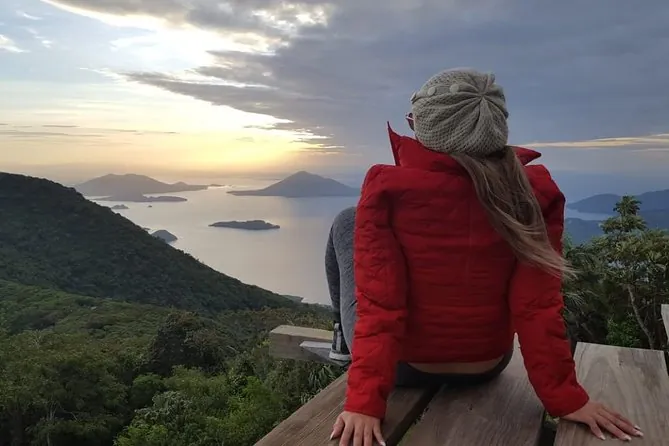
This one… wow. If you’re into volcano views, this is the place. Conchagua rises out of the eastern edge of El Salvador, and from the top, you can see straight out over the Gulf of Fonseca — with islands dotting the sea like a dream.
On really clear days, Nicaragua and Honduras peek through the haze. Three countries in one view. It’s the kind of panorama that makes you stop talking for a while if you love to be a adrenaline junkie.
Camping here is next-level. Sunrise above the clouds, then a slow descent into warmth, light, and… just silence. The only sound might be your boots crunching dirt as the fog lifts.
What to do there: Camp at the summit or take a guided 4×4 tour. There’s a famous rainbow slide up there too — touristy, sure, but it’s ridiculously fun and makes for surreal photos.
How to get there: It’s near La Unión. Best reached by private transport or organized tours. Don’t try to drive up without a sturdy vehicle — the roads are steep, loose, and bumpy.
Safety note: This area is more remote, so it’s smart to go with a guide who knows the land well. There are still some rural challenges out here (spotty signal, rough paths), so be prepared.
Pro tip: After your summit, take a boat tour from La Unión to explore the Gulf’s hidden islands. Some are totally untouched — no hotels, no shops. Just sand, birds, and your own breathing.
10. El Pital (The Highest Point in El Salvador)
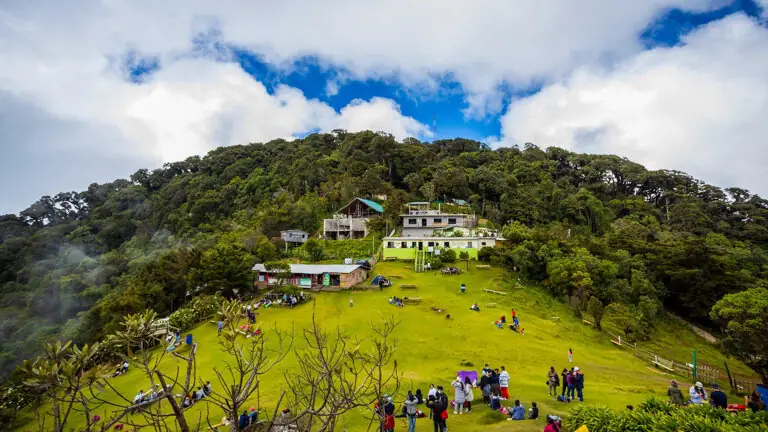
When people think of El Salvador, they picture heat. Beaches. Volcanoes. But El Pital… flips that on its head. It’s the country’s highest point, tucked near the border with Honduras, and it feels like someone secretly dropped a slice of the Swiss Alps in Central America. Pine trees. Crisp, cool air. Fog that rolls in thick enough to swallow the landscape whole.
It’s not flashy, not overly Instagrammed — which, honestly, is part of the charm. You come here to breathe.
What to do there: Hike the trails (many are short and easy), visit the viewpoint that overlooks the Cerrón Grande Dam and surrounding valleys, and maybe — just maybe — pick your own strawberries at one of the local farms. There’s also Laguna Verde nearby, a small crater lake surrounded by dense forest.
How to get there: You’ll want to base yourself in San Ignacio, in the Chalatenango region. From there, it’s a 4×4 ride up winding roads to El Pital. Not on most El Salvador maps, but locals know the way.
Weather note: Bring a jacket. And socks. At night, it gets cold. Not cool — actually cold. It’s weirdly cozy.
Pro tip: Stay the night. Some pet-friendly hotels and rustic lodges offer wood-stove heating and homemade meals. Hostal Cumbres del Volcán is a solid pick, or go more off-grid with a cabin rental if you’re craving solitude.
Practical Tips for Visiting El Salvador’s Surreal Corners
Let’s be real for a second — El Salvador isn’t on everyone’s bucket list. And maybe that’s exactly why it feels so untouched. But if you’re planning a trip to these dreamlike corners, here’s what you’ll want to know.
When to go:
The dry season (roughly November to April) is best for hiking, camping, and photographing crater lakes at their brightest. But… the rainy season brings waterfalls roaring to life and the jungles turn impossibly green. You’ll get misty mornings, wild flowers, fewer crowds. Both seasons have their own kind of magic.
Getting around:
Public buses are cheap and common, but honestly — for the remote spots like Cerro León or El Imposible, you’ll want a local driver or guide. Especially if you’re unfamiliar with rural dirt roads or can’t read a local El Salvador map. Roads can get tricky fast. Apps like El Salvador Blueprint are helpful, but signal isn’t guaranteed.
Is El Salvador safe?
Honestly? It depends where you go and how you move. Tourist zones like El Tunco, Santa Ana, and Ruta de Los Flores are well-traveled and generally safe. That said… always stay alert, avoid walking alone at night, and listen to locals. Ask questions. Safety isn’t one-size-fits-all here — it shifts.
Language matters:
In San Salvador or big beach towns, you’ll find English speakers — sometimes. But out in the countryside or places like Santa Teresa Hot Springs or Quelepa ruins? Not likely. Learn a few Spanish basics. Even just ¿Dónde está…? goes a long way.
Money tips:
The U.S. dollar is used, which is helpful. El Salvador is affordable, no doubt — especially compared to neighboring countries. But remote areas like Montecristo National Park or Nawi Beach House might have higher costs for tours or gear rentals. Bring cash. Not all places accept cards, especially the small pet-friendly hotels or roadside food stands.
Responsible travel:
If you’re heading into protected zones like Parque Nacional El Imposible or Lake Ilopango, go with certified guides. Don’t litter, stay on marked trails, and maybe skip that drone shot over sacred land. A lot of these places — like Joya Cerran or Cascada la Golondrinera — aren’t just pretty. They’re cultural. Spiritual. Treat them that way.
Final Thoughts
What surprised me the most about El Salvador wasn’t just the beauty — although yes, that’s part of it. It was how quietly it amazed me. No crowds. No tourist traps shouting for attention. Just raw, surreal places that made me pause. And breathe. And wonder why more people weren’t here to see it.
I came looking for top 3 places to visit in El Salvador. But what I found were quiet black sand beaches, volcano views that didn’t feel real, and little towns where strangers invited me in for soup. Places like Playa El Tunco and El Zonte had surf retreats and beach vibes… but inland, places like Cerron Grande and La Libertad offered a slower rhythm. A deeper one, maybe.
If it’s your first time visiting El Salvador, take it slow. Don’t try to cram it all in. The best places to visit in El Salvador for first time travelers aren’t just about the checklist — they’re about moments. A foggy morning at Lake Ilopango. Pupusa pizza eaten off a street cart. That first plunge into Cascadas de Tamanique Waterfalls.
So yeah, El Salvador is very real. But it’ll feel like a dream if you let it.
And honestly… isn’t that the best kind of trip?
Frequently Asked Questions
1. Is El Salvador safe for tourists in 2025?
Generally, yes — especially in tourist areas like Ruta de las Flores, San Salvador, and El Tunco. Still, stay alert, don’t flash valuables, and ask locals about current conditions.
2. Do I need a visa to visit El Salvador?
If you’re from the U.S., Canada, or most of Europe, no visa is needed for short stays. Just check your passport validity and any regional requirements.
3. What’s the best time to visit El Salvador?
Dry season (Nov–April) is ideal for volcano hikes and exploring national parks. Rainy season (May–Oct) brings lush beauty and fewer crowds.
4. Is English widely spoken?
Not really. In hotels like Hotel Caleta or Mandala Eco Villas, you’ll find some staff who speak English. But in smaller towns and rural spots? Basic Spanish helps a lot.
5. What currency is used in El Salvador?
U.S. dollars. Bring small bills — places like Mercado Central and local buses don’t always have change.
6. Are solo female travelers safe in El Salvador?
Many travel solo without issue. Stick to well-known areas, avoid walking alone at night, and stay in trusted hostels like Hostal Casa Verde or Hostal Cumbres del Volcan.
7. Can I drink the tap water?
Stick to bottled or filtered water. Most locals don’t drink straight from the tap either.
8. How many days do I need to explore these magical places?
To really dive in? At least 10 days. If you’re tight on time, you can cover 4 tourist attractions in El Salvador in a 5–6 day itinerary.
9. Are there any pet-friendly hotels in El Salvador?
Yes! Look into places like Casa Victoria, Mandala Eco Villas, or select Airbnb stays near Santa Ana and Cerro Verde.
10. What food should I not miss?
Start with pupusas, obviously. Then try Pollo Campestre or Sopa de Mondongo. And if you’re in the mood for something unexpected… Pupusa pizza exists. And it’s glorious.
Recent Posts
 Tubeseferi: 7 Must-Know Features for Smart City Travel in 2025
Tubeseferi: 7 Must-Know Features for Smart City Travel in 2025 What Is Antolohe? Hidden Travel Meaning Revealed for 2025
What Is Antolohe? Hidden Travel Meaning Revealed for 2025 How to Become a Travel Agent Without Experience?
How to Become a Travel Agent Without Experience? 15 Best Airlines for Long Flights in 2025: Comfort, Cuisine, and Sky-High Service
15 Best Airlines for Long Flights in 2025: Comfort, Cuisine, and Sky-High Service Day Trips from Buenos Aires: Surprising Routes Off the Tourist Trail
Day Trips from Buenos Aires: Surprising Routes Off the Tourist Trail
